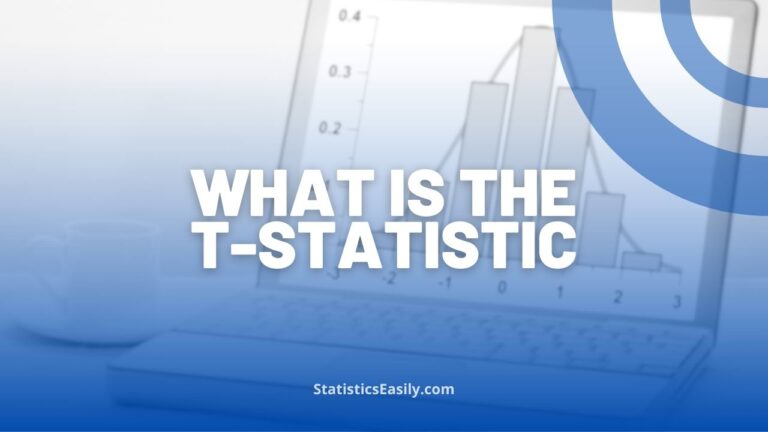Two-Sample t-Test in R Explained
You will learn the key steps to execute a two-sample t-test in R.
Introduction
At the heart of statistical analysis lies the practice of hypothesis testing, a foundational technique used to make inferences about populations based on sample data. Hypothesis testing allows researchers and analysts to test assumptions and make uncertain decisions, providing a systematic framework for evaluating the strength of evidence against a null hypothesis.
The two-sample t-test helps compare the means of two independent groups among the myriad of available tests. This test is precious when assessing the effect of different conditions, treatments, or interventions across distinct samples, making it a staple in medical and marketing fields.
The choice of software plays a pivotal role in the execution and interpretation of statistical tests. With its extensive libraries and active community, R offers a robust platform for conducting two-sample t-tests. Its accessibility and powerful statistical functions make R an indispensable tool for data analysts and researchers. Mastering the two-sample t-test in R can precisely test hypotheses and derive meaningful insights from comparative data analysis.
In the forthcoming sections, we will delve into the theoretical underpinnings of the two-sample t-test, provide a practical guide to its application in R using our previously created dataset, and highlight best practices and common pitfalls to ensure the reliability and accuracy of your analyses. Through this exploration, we aim to empower you with the knowledge and skills to leverage the two-sample t-test in R for insightful data analysis.
Highlights
- Two-sample t-tests compare means from two distinct groups.
- R’s t.test() function simplifies two-sample t-test execution.
- Assumption checks are crucial for valid t-test results.
- Case studies illustrate the t-test’s practical application.
- Best practices enhance the reliability of t-test outcomes.
Ad Title
Ad description. Lorem ipsum dolor sit amet, consectetur adipiscing elit.
Theoretical Background
The two-sample t-test is a statistical method used to determine whether a significant difference exists between the means of two independent groups. This test is fundamental when comparing the effects of two conditions or treatments in various scientific and research contexts.
Assumptions
Before conducting a two-sample t-test, it’s imperative to ensure that certain assumptions are met to guarantee the validity of the test results:
- Independence of Samples: The data in the two groups must be independent, meaning the observations in one group should not influence the observations in the other group.
- Normality: The data in both groups should be approximately normally distributed. This assumption can be checked using graphical methods such as Q-Q plots or statistical tests like the Shapiro-Wilk test.
- Variance Homogeneity (Equal Variances): The variances in the two groups should be approximately equal. This assumption can be assessed using tests such as Levene’s test.
Dependent vs. Independent Samples
It’s crucial to distinguish between dependent and independent samples when considering a two-sample t-test. Independent samples refer to groups where the test subjects are not matched or paired in any way, reflecting scenarios where the two samples are drawn from different populations. On the other hand, dependent samples (not applicable in a two-sample t-test but relevant in paired tests) involve matched or paired subjects, such as before-and-after measurements on the same subjects.
Two-Sample t-Test Logic
The logic behind the test is to quantify the difference between the two group means relative to the spread (or variance) within the groups. A larger t-value indicates a more significant difference between the groups, which, depending on the degrees of freedom and the chosen significance level, may lead to the rejection of the null hypothesis (which posits no difference between the group means).
When using R, the ‘t.test()’ function simplifies this process by encapsulating the computational complexity and providing an intuitive interface for conducting the two-sample t-test. The function automatically calculates the t-statistic, degrees of freedom, and p-value, making it accessible for users to interpret the test results and draw meaningful conclusions from their data analyses.
In the following sections, we will explore how to apply these theoretical concepts in R using practical examples and our previously created dataset, ensuring a comprehensive understanding of the two-sample t-test and its applications in real-world scenarios.
Two-Sample t-Test in R
Conducting a two-sample t-test in R is straightforward. It involves several key steps, from data preparation to assumption testing and finally, interpreting the results. Below is a step-by-step guide to executing a two-sample t-test using the R programming language.
Data Preparation and Exploration
Before running the t-test, it is essential to prepare and explore your data:
# Load the dataset
data <- read.csv('/path/to/your/data.csv')
# Explore the first few rows of the dataset
head(data)
# Summarize the dataset to understand its structure
summary(data)
Checking Test Assumptions
To validate the assumptions of normality and equal variances, you can use visual and statistical methods:
# Check for normality using a Q-Q plot for each group qqnorm(data[data$Group == 'A',]$Scores) qqline(data[data$Group == 'A',]$Scores) qqnorm(data[data$Group == 'B',]$Scores) qqline(data[data$Group == 'B',]$Scores) # Check for equal variances using Levene's Test library(car) leveneTest(Scores ~ Group, data=data)
Running the Test
With the assumptions checked, you can perform the two-sample t-test in R:
# Conduct the two-sample t-test t_test_result <- t.test(Scores ~ Group, data=data) # Display the results t_test_result
Interpretation of Test Results
The output of ‘t.test()’ will provide several key pieces of information, including the t-statistic, degrees of freedom, p-value, and confidence interval.
# Interpret the p-value
# A p-value less than 0.05 typically indicates a significant difference between group means
if(t_test_result$p.value < 0.05) {
print("There is a significant difference between the groups.")
} else {
print("There is no significant difference between the groups.")
}
# Interpret the confidence interval
print(paste("The 95% confidence interval of the difference between means is: ",
toString(t_test_result$conf.int)))
The p-value informs us whether the observed difference between group means is statistically significant. In contrast, the confidence interval gives us a range within which the true difference between the population means is likely to lie.
Cohen’s d Effect Size
After establishing whether the means of two groups significantly differ using a two-sample t-test, it’s essential to understand the size of this difference. This is where the concept of effect size comes into play, with Cohen’s d being one of the most common measures for this purpose in the context of a t-test. Cohen’s d assesses the size of the difference relative to the pooled standard deviation of the two samples.
Calculating Cohen’s d:
# Install the effsize package if you haven't already
install.packages("effsize")
# Load the effsize package
library(effsize)
# Conduct the two-sample t-test (assuming you have already done this)
t_test_result <- t.test(Scores ~ Group, data=data)
# Calculate Cohen's d using the effsize package
cohens_d <- cohen.d(data$Scores, data$Group)
# Display Cohen's d value
print(cohens_d)
Cohen’s d values can typically be interpreted as follows:
- Small effect size: d = 0.2
- Medium effect size: d = 0.5
- Large effect size: d = 0.8
These are rough guidelines, and the interpretation may depend on the research context and field of study. Generally, a larger absolute value of Cohen’s d indicates a larger effect size.
Remember to adjust your dataset’s file path accordingly and install any required packages, such as ‘car’ for Levene’s Test, before running the R code.
Case Study: Evaluating Teaching Methods
Imagine an educational researcher who wants to evaluate the effectiveness of two teaching methods for enhancing student performance in statistics. Method 1 is a traditional lecture-based approach, while Method 2 is an interactive, problem-based learning approach. The researcher gathers exam scores from two groups of students, each taught by one of the methods, and decides to use a two-sample t-test in R to analyze the data.
Data Analysis Process
Problem Statement: Is there a significant difference in students’ performance when taught using the two different teaching methods?
Data Preparation and Exploration: The researcher collects scores from 100 students for each group. The data is loaded into R, and preliminary analysis shows it is well-structured and has no missing values.
Download the dataset by clicking the link below!
# Load the data
data <- read.csv('student_performance.csv')
# Explore the data
summary(data)
str(data)
Assumption Checks: The researcher checks for normality and equal variances.
# Visual normality check library(ggplot2) ggplot(data, aes(x=Score, fill=Teaching_Method)) + geom_histogram(alpha=0.5, position='identity') + facet_wrap(~Teaching_Method) # Shapiro-Wilk normality test shapiro.test(data[data$Teaching_Method == 'Method 1',]$Score) shapiro.test(data[data$Teaching_Method == 'Method 2',]$Score) # Levene's Test for equal variances library(car) leveneTest(Score ~ Teaching_Method, data=data)
Running the Test: With the assumptions validated, the t-test is performed.
# Conduct the two-sample t-test t_test_result <- t.test(Score ~ Teaching_Method, data=data) # Display the results print(t_test_result)
Interpretation of Test Results: The t-test results show a p-value less than 0.05, indicating a statistically significant difference in scores between the two teaching methods.
# Calculate Cohen's d for effect size library(effsize) d <- cohen.d(data$Score, data$Teaching_Method) print(d)
Insights: The analysis reveals that students taught by Method 2 performed significantly better than those taught by Method 1, with a medium to large effect size. This suggests that interactive, problem-based learning may be more effective for teaching statistics than traditional lectures.
Best Practices and Common Pitfalls
When conducting a two-sample t-test in R, following best practices is essential to ensure accurate and reliable results. Here are some tips and common mistakes to avoid:
Best Practices:
- Pre-Analysis Data Review: Always start with a thorough data exploration. Use summary statistics and visualizations to understand your data’s distribution and to identify any anomalies or outliers that could affect the results.
- Check Assumptions Rigorously: The validity of a two-sample t-test relies on the assumption of independence, normality, and equal variances. To verify these assumptions, use statistical tests like Shapiro-Wilk for normality and Levene’s test for equal variances.
- Use Appropriate t-test: Based on your data, choose between a paired or independent two-sample t-test. Based on your variance homogeneity test results, decide whether to assume equal variances for independent samples.
- Report Effect Size: Always report the effect size along with the p-value. The p-value tells you if the effect is statistically significant, not meaningful. Cohen’s d is a common measure of effect size.
- Robustness Checks: Conduct sensitivity analyses, such as comparing the results of parametric and non-parametric tests, to ensure that your findings are robust.
Common Pitfalls:
- Ignoring Assumptions: Pay attention to the importance of checking the t-test’s assumptions. Violations can lead to incorrect conclusions.
- Overemphasis on p-values: A significant p-value does not necessarily mean a result is practically significant. Consider the context and the effect size.
- Multiple Comparisons: Be cautious when conducting multiple t-tests, as this increases the chance of committing a Type I error. Consider corrections like Bonferroni if multiple comparisons are made.
- Data Snooping: Avoid the temptation to repeatedly test your data by tweaking the model or the data until you get significant results. This practice can lead to false positives.
- Sample Size Neglect: A very large sample size can lead to very small p-values, even when the difference is not practically significant. Conversely, a small sample size might not have enough power to detect a significant differ
Ad Title
Ad description. Lorem ipsum dolor sit amet, consectetur adipiscing elit.
Conclusion
In exploring the two-sample t-test in R, we have traversed from the foundational concepts of hypothesis testing to the practical execution of the test and through the interpretation of its results. The two-sample t-test emerges as a powerful statistical tool for comparing group means, offering clear insights into the effects of different interventions or conditions.
Critical takeaways from our journey include the importance of satisfying the underlying assumptions of the t-test: the independence of samples, the normal distribution of data, and the homogeneity of variances. Equally important is the understanding that statistical significance indicated by the p-value needs to be complemented with the practical relevance ascertained through effect size, with Cohen’s d providing a measure of the magnitude of the difference.
Moreover, we’ve highlighted that while R’s ‘t.test()’ function is a robust tool for conducting t-tests, the meticulous data preparation and assumption checking underpin the validity of its results. This underscores the broader theme that good data analysis is as much about the process as the tools employed.
As we conclude, we invite readers to apply the two-sample t-test method in their research and data analysis endeavors. Embrace this method not just as a statistical procedure but as a lens through which deeper data insights can be discovered, insights that are true to the data, beneficial in their application, and beautiful in their clarity and simplicity.
We encourage you to continue exploring and applying the two-sample t-test, keeping in mind the best practices and common pitfalls discussed. Through careful and considered application, you can uncover meaningful patterns and relationships within your data, thereby contributing to the collective quest for knowledge that defines the scientific endeavor.
Finally, remember that applying the two-sample t-test in R is not just a mechanical process but a thoughtful one. It requires attention to detail, an understanding of the data, and a commitment to the integrity of the analytical process, all of which resonate with the pursuit of truth in research.
Recommended Articles
Explore our blog’s in-depth analyses and guides to elevate your data science skills.
- ANOVA and T-test: Understanding the Differences and When to Use Each
- What is the difference between t-test and Mann-Whitney test?
- Student’s T-Test: Don’t Ignore These Secrets
- Sample Size for t-Test: How to Calculate?
- Paired T-Test: A Comprehensive Guide
- APA Style T-Test Reporting Guide
Frequently Asked Questions (FAQs)
Q1: What is a two-sample t-test? It’s a statistical method used to compare the means of two independent groups to determine if there is a statistically significant difference.
Q2: Why use R for a two-sample t-test? R provides robust packages and functions like ‘t.test()’ for efficient and accurate statistical analysis, including two-sample t-tests.
Q3: What are the assumptions of a two-sample t-test? Key assumptions include independence of samples, normal distribution of data, and equal variances between the two groups.
Q4: How do I check for normality in R? Use graphical methods like Q-Q plots or statistical tests like Shapiro-Wilk to assess the normality of your data in R.
Q5: What is the ‘t.test()’ function in R? The ‘t.test()’ function in R performs t-tests, including two-sample t-tests, providing an easy-to-use interface for hypothesis testing.
Q6: How do I interpret the results of a two-sample t-test? Focus on the p-value and confidence interval to determine if there’s a significant difference between the group means.
Q7: Can I perform a two-sample t-test with unequal variances? R’s ‘t.test()’ function allows t-tests with unequal variances using the ‘var.equal = FALSE’ parameter.
Q8: What are common pitfalls in conducting a two-sample t-test? Common pitfalls include ignoring assumptions, misinterpreting p-values, and overlooking data exploration.
Q9: How do case studies help in understanding two-sample t-tests? Case studies provide practical examples of applying two-sample t-tests, offering insights into the analysis process and interpretation.
Q10: Where can I find more resources on two-sample t-tests in R? For in-depth information and guides on conducting two-sample t-tests, look for reputable statistical textbooks, online tutorials, and R documentation.








